In parts of rural India, one woman is fighting to stop the witch hunting that destroyed her own life.
A child had just died, and someone was going to pay. At about 10:30 p.m. on a warm October evening, Ram Munda was visiting his mother’s house. She and three of Ram’s siblings sat outside under a thatched roof held up by bamboo sticks.
Ram said goodnight and was heading back to his hut at the far end of Sasokora village when he saw Rai Singh Munda—an intimidating local man with whom the family had a long-standing dispute—approaching with a wooden cane in his hand. He was with his brother, Shyamlal Munda, who held an ax. Ram ducked and hid behind a bush.
Rai Singh began screaming furiously that Ram’s mother, Suniya, who was 72, was a “daayan,” a witch. Rai Singh’s one-year-old son had died that day and Suniya’s sorcery was responsible, he shouted. He would not spare her or her family.
Ram watched in horror from his hiding place as the two men attacked his brothers and murdered them. He was afraid to scream, thinking that they would find him and kill him as well. Then they slaughtered his sister. Finally, he watched as they struck his mother with an ax and beheaded her, leaving her body on the bamboo cot she slept on outside the house.
When the murderers left, Ram snuck quietly to a neighbor’s house to report what had happened.
By the time a police officer arrived at the village in the early hours of the morning, the bodies of the four dead lay scattered on the ground and the village had fallen into a deep silence.
About two months later, on a dusty winter afternoon, Chutni Mahto, a sprightly old woman who lives in a village about 18 miles away, arrives at the Kuchai police station. Policemen wearing camouflage fatigues laze in plastic chairs under the shade of a sprawling fig tree. Chutni, a small but assertive woman, introduces herself to Sub-Inspector Ravi Kumar Singh, explaining that she is an activist who fights against witch hunting and that she wants to see where the Mundas were murdered.
Ravi has read of her work in the local newspapers and admires her courage. You can go, he says, but you must be accompanied by the police, as the presence of Naxalite—Maoist—insurgents in the region make the area unsafe.
Rai Singh and Shyamlal, the two brothers accused of murder, have so far shown no remorse. “They said in front of everybody that they had done the right thing,” says Ajay Prasad, the police officer who first arrived on the scene following the murders. “There was no guilt there.” Even as they remain in judicial custody while a court case drags on, they maintain that their actions were justified.

Chutni returns the next morning to find nearly forty policemen on bikes and Jeeps, prepared to escort her. The unlikely motorcade makes its way past undulating fields of freshly harvested wheat punctuated by towering electric poles. The mountains in the distance slowly come into view as the morning fog begins to lift. Eventually, the cars arrive at a clearing about halfway up a hill, where the road ends and a steep footpath begins. They will have to walk two miles to the village, tucked away in a forest.
Chutni walks near the middle of the procession, chatting with officers. She wears a beige sweater wrapped over her olive-green sari. “They said that it was risky to come here, but I am also a small policewoman,” she says, her rubber slippers slapping against the rocks. “If a case comes to my notice, I can’t ignore it.”
Most months, the village of Sasokara only sees the Indian government in the form of sporadic police patrolling. Even then, officers move in large groups. But in the months since the murders, policemen and high-ranking officials have descended on the village. Policemen hold meetings to implore the villagers not to believe in local superstitions and to seek professional medical help if someone falls ill.
It is ingrained in their hearts and minds that sick people die because of witchcraft.
“It is ingrained in their hearts and minds that sick people die because of witchcraft,” says Ravi, the sub-inspector. “And then they act on rage. It is easy to kill a man here, just like killing an animal.”
Sasokora is a collection of about 60 mud huts scattered among towering trees. The only sign of modern life is the occasional mobile phone. There is no electricity. Children who want an education must walk three miles each way to the closest school. The residents here are mostly adivasi—indigenous—people of the Munda community, who typically use the tribe’s name as their family name. Most of them farm for a living and sell firewood from the forest.
At his late mother’s house on the village’s edge, Ram Munda, 52, sits on his haunches, wearing a maroon sweatshirt stained by the local red mud that seems to settle on everything. Chutni settles down onto a bamboo cot and questions him about the incident. His hands tremble slightly as he clutches a crumpled green folder holding his most important documents. He stares down at his bare feet. “They used to call my mother a witch,” says Ram. “They said every time she was around the child, he fell sick. My mother said, you can kill me but I still don’t know anything.”
His wife, Kangla Munda, who has been standing silently at the back, pipes up. “The old lady used to believe in some goddess,” she says, referring to her late mother-in-law. “She did some puja with vermilion and flowers. We don’t know.” Then she sinks back into silence. Even among family members, the specter of witchcraft raises doubts.
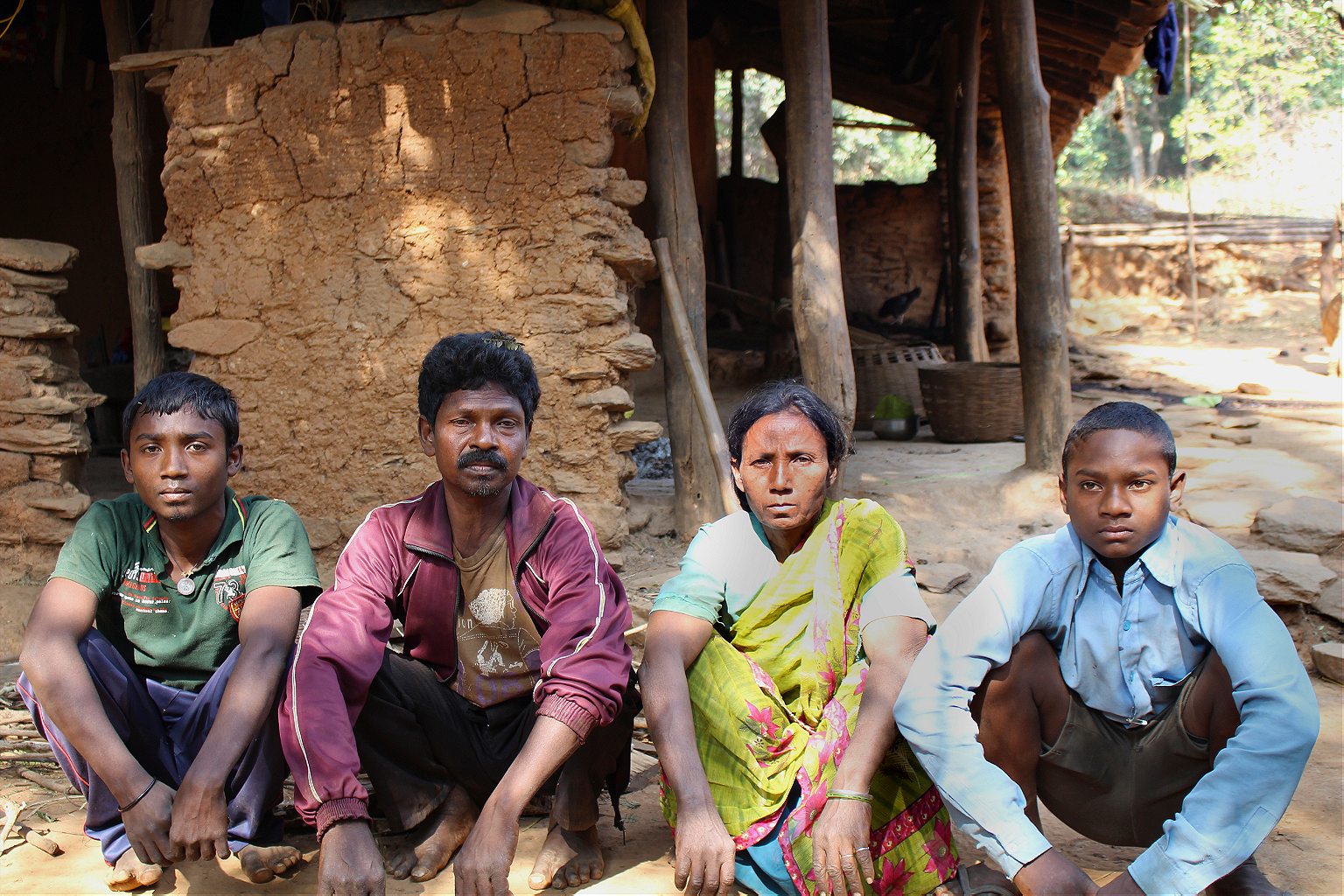
Now that his mother is dead, Ram will inherit the three acres she owned. But he is scared to continue living in the village, worried that he will be murdered.
When the police looked into the murders, they found a more mundane cause than sorcery for Rai Singh’s son’s death. The child had been sick for a while, and when he got worse, his father bought medicine from a town nearby. When Ajay, the police officer, asks to see the bottle, he finds that the medicine is expired. “I told Rai Singh, you should have gone to a doctor,” says Ajay. “But people in these rural areas don’t like doctors.”
While the closest hospital is about four miles away, a rural medical practitioner is supposed to visit in the case of an emergency. But due to the remoteness of the village and the scarcity of available doctors, these visits are rare.
As Chutni speaks to Ram, a crowd of villagers gathers. Looking on curiously, they discuss the case that has brought their village so much attention.
“Look at her, this 55-years-old lady standing right in front of you is Chutni Mahto. She was also called witch. Does she look like one?” Ravi asks aloud. “No, this is all superstition, no such things exist.”
Chutni, on cue, begins addressing the gathered crowd. “Now listen, Ram Munda, they slaughtered your mother. Now they will say that the mother-in-law’s ghost has passed into her daughter-in-law. Tomorrow they will try to murder your wife,” she says, handing out her phone number and asking people to call if there are other allegations of witchcraft in the village. “You have to be united. You have to all say together that there is no such thing. There are no witches here.”

Chutni was born just over half a century ago in Birbas, when the village was still a sleepy collection of mud huts. The busy highway that now passes by was yet to be built and electricity and television had yet not reached the village.
She was born to a relatively wealthy family of the privileged Mahto caste. Her father had a coveted job in a nearby factory and owned nearly 10 acres of farmland. Chutni attended the government school in the village but dropped out in the third grade. After that, she spent her time helping with the cooking and washing at home, and when she got older, taking their cattle to graze.
When she was fifteen, Dhananjay Mahto, a young man from a rich family with a lot of farmland in a village nearby, proposed to her. Soon she was married and moved to Mahataindeh, a village located in a thickly forested area, about a two-hour walk from her own. She missed her town’s bustling markets, but her husband was kind and her father-in-law looked out for her, bringing her snacks when he went to the market. She was a pretty girl from a rich family, and he wanted to make sure she stayed happy. A year later, at 16, she became pregnant with her first son. Soon, she had three more children, three sons and a daughter.
Some years later, her in-laws passed away and her relationship with her husband’s relatives, who lived nearby, began to sour. They were jealous of her, she thinks, because her father sent her new saris and money often, and she always took care of her appearance. She sent her four children to school, while her brother-in-law sent his children out to graze cattle.
“They said that my husband is not earning even two rupees, then how come I am so tip-top and able to send my children to school?” says Chutni.
One day, her brother-in-law’s daughter began vomiting, and the family discussed taking her to the doctor in the nearest town. Though the girl was unmarried, Chutni, who was now 30, knew that the girl was having an affair with a boy in the village.
Her brother-in-law lost his temper. How could Chutni possibly know that his daughter was pregnant?
Surely, she must be a sorceress. He stormed into her house and dragged her out, screaming that she was a witch. He, along with three other men, hit her and kicked her, dragging her by her hair. Finally, they hit her forehead with a machete and she collapsed. Thinking she was dead, they ran away, leaving her bleeding. Her oldest son, now 14, helped her stop the bleeding using cow dung.
The next day, someone from the village told her that her brother-in-law and some men were drinking at the village shop, and they might attack her again. Chutni left that very night, the bandage still on her head. The next few months were the toughest in Chutni’s life. Within a week of her being branded a witch, her mother passed away. She went to her sister’s house. But her sister and her husband lived in a tiny tin shack, and Chutni and her children slept at night under the tree in their courtyard.
“I didn’t know what was happening—where I slept, what I ate—I was so broken I was barely able to do anything,” says Chutni. “I felt like taking my own life, but then I thought about my four children.”
There are still people who hide their kids if I walk past their house.
When Chutni tried to file a police complaint, the officer demanded a bribe of $150. She was sitting outside the police station and crying when she met Bhosko Besra, a man from her village who had recently begun a political career. He called a reporter from a local newspaper, who wrote an article about Chutni’s plight that caught the attention of someone at a non-profit organization based in Jharkhand, Free Legal Aid Committee (FLAC). They tracked her down and offered to help her fight her case. With their help, she managed to take her case to a high-ranking police officer.
“They beat me, insulted me and gave me a stigma forever. The wound will always remain,” she says now of her attackers, running her finger along the scar on her forehead. “There are still people who will hide their kids if I walk past their house.”
Her husband, after staying with her for about a year, abandoned the family. Her older brother gave her a plot of land and FLAC gave her money to construct a house, and continue to send her four children to school. Chutni slowly transformed from a survivor into an activist. She helped the activists at FLAC identify cases of witch hunting in the surrounding villages and brought the victims to the office, and they gave her salary of $10 a month.
Ten years ago Chutni began to work with the Association for Social and Human Awareness (ASHA), a non-profit that raises awareness about witch hunting. Now, she has helped over 50 women in her district, who have been branded witches, ostracized, and tortured.
It is typically thought that pure superstition drives the persecution of women who are branded as witches in parts of rural India. But as Chutni travels the region, she finds that often, the answers to a case are more often located in temporal affairs.
The practice of branding women witches, accusing them of practicing black magic, and inflicting on them physical, sexual, and mental abuse, continues to plague the rural hinterlands of India. Witches are blamed for anything from a bad harvest to a delayed monsoon to an illness. The person who has suffered a loss typically goes to an ojha, a traditional healer, who performs a ritual to determine whether the woman blamed for the family’s misfortune is a witch. In some cases, the ojha can undo a curse. In others, the woman is murdered.
Once branded a witch, a woman is ostracized. Sometimes, this means that when she approaches villagers hide their children and their food. In more extreme cases, she may be publicly humiliated, paraded naked, raped, forced to consume human excreta, or murdered outright.
“Once a woman is declared a witch she is considered the embodiment of evil,” says Prem Chand, chairman of FLAC. “She must be hunted, her strength diminished, her powers suppressed, or she herself must be killed.”
Government statistics show that in 2015, 135 women across India were killed after being branded witches, of which 32 were in the eastern state of Jharkhand. But this number is widely considered an underestimate, as most cases go unreported. Sometimes, it is hard to find a witness to come forward because the entire community is privy to the crime. When women do approach police officers, they are frequently rebuffed. Cases that are especially gruesome are reported in local newspapers, but more mundane abuse is overlooked.
While witch-hunting is rooted in traditional tribal practices, superstition often veils other, more pedestrian motivations. Disputes over land are a leading cause. In the largely tribal community of Jharkhand, it is customary that women are allowed to manage and work farm land, but not to own it. Land is traditionally passed on through male lineage, and if a widow dies, the land is passed on to her husband’s male relatives. The motive in many cases of witch hunting is to drive a woman, often single or widowed, to abandon a village, allowing others to usurp her land. As land in Jharkhand, enriched with minerals and forest produce, increases in value and scarcity, the incentive for murder increases.
Witch hunting has become increasingly sexualized.
Witch-hunting victims are almost all female, and the abuse is part of a larger pattern of oppression in rural India today. As gender roles shift, women are becoming more independent in even the most under-developed parts of the country. At this moment of transition, women in different parts of the country simultaneously occupy different centuries: while women sit at the heads of large banks and corporations in rapidly growing cities, in some corners of the country, women are murdered for being outspoken.
Witch hunting is sometimes a reaction to a woman accumulating wealth or gaining political power in traditionally patriarchal rural communities. In 2008, Lata Sahu, a Dalit—or member of the lowest caste—woman from the central Indian state of Madhya Pradesh, contested a village council election. She was branded a witch and paraded through the streets naked.
Today, witch hunting has become increasingly sexualized. “If a woman has turned down the sexual advances of an economically or politically dominant man in the village then he labels her a witch,” says Govind Kelkar, a senior adviser to Landesa, a non-profit organization that advocates for land rights for the poor. “As a warning to other women.”
The combination of forces seen in Jharkhand is similar to those seen in different eras in the U.S. and Europe. In times of hardship, a person’s relative wealth could lead to persecution. Sociologist Maria Mies has argued that seizing the wealth of the accused is one of the primary goals of witch hunting.
In the 19th century, witches were held responsible for epidemics, abnormal weather, crop destruction and drought. Wolfgang Behringer, a German historian specializing in the witchcraft beliefs of early modern Europe, found that increases in persecution coincided with moments of drastic climactic change.
Then there is the scapegoat theory: the idea that women were labeled as witches so that society could have something external to blame for their troubles. Dorie Klein writes that witches served as a distraction that “diverted mass resentment over plague and social upheaval onto a powerless group of women.”
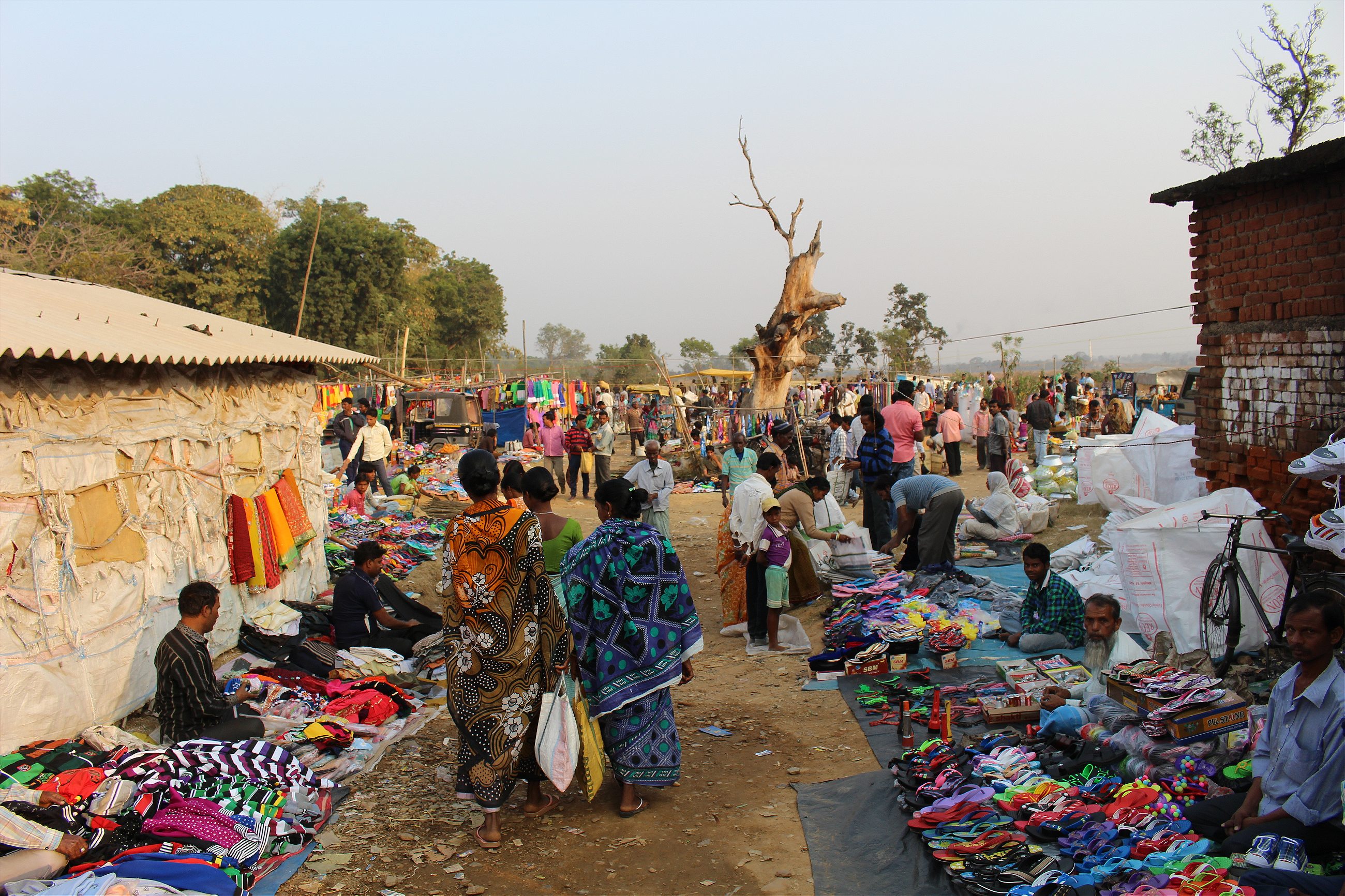
The Indian states of Jharkhand, Bihar, Chhattisgarh, Rajasthan and Assam, where the practice is common, have specific laws to deal with witch hunting. However, in Jharkhand, the law’s provisions are shockingly mild: a person who physically or mentally tortures a person identified as a witch can be jailed for six months or fined $30. For the most violent incidents, such as physical assault and murder, offenders are charged under the national criminal code.
Legal experts say that state laws are not effective. “Witch hunting cases are complex and involve multiple forms of victimization, exploitation, persecution and criminal offences,” says Asha Bajpai, professor of law at the School of Law Rights and Constitutional Governance at the Tata Institute of Social Sciences in Mumbai. “A stringent central law is necessary.”
The Indian state is making an effort to curb attacks. Last March, the Jharkhand government announced that it would create fast-track courts that would hold expedited trials in cases relating to the torture, assault or murder of women branded witches. The state’s education department is planning to include a chapter on witch hunting in school textbooks in an effort to raise awareness.
“It is very difficult to remove these traditional practices from a society,” says Mahua Maji, the chairperson of the State Commission for Women in Jharkhand. Ojhas, she says, play a religious role in society and any action on the government’s part to curb their authority is seen as interference in indigenous culture.
However, activists say that there is a lack of political will. Denying the existence of witches in rural villages can lose you the votes of voters who feel their traditions are not being respected. So politicians often prefer to skirt the issue while paying it lip service when they speak at seminars attended by academics and activists in the city.
Civil society groups and activists have helped many, but efforts like this are piecemeal at best. The diverse reasons behind the practice of witch-hunting mean that ultimately, it will only subside with truly inclusive social and economic development. As long as the only face of the Indian government that deprived villages see is armed policemen, this is unlikely.
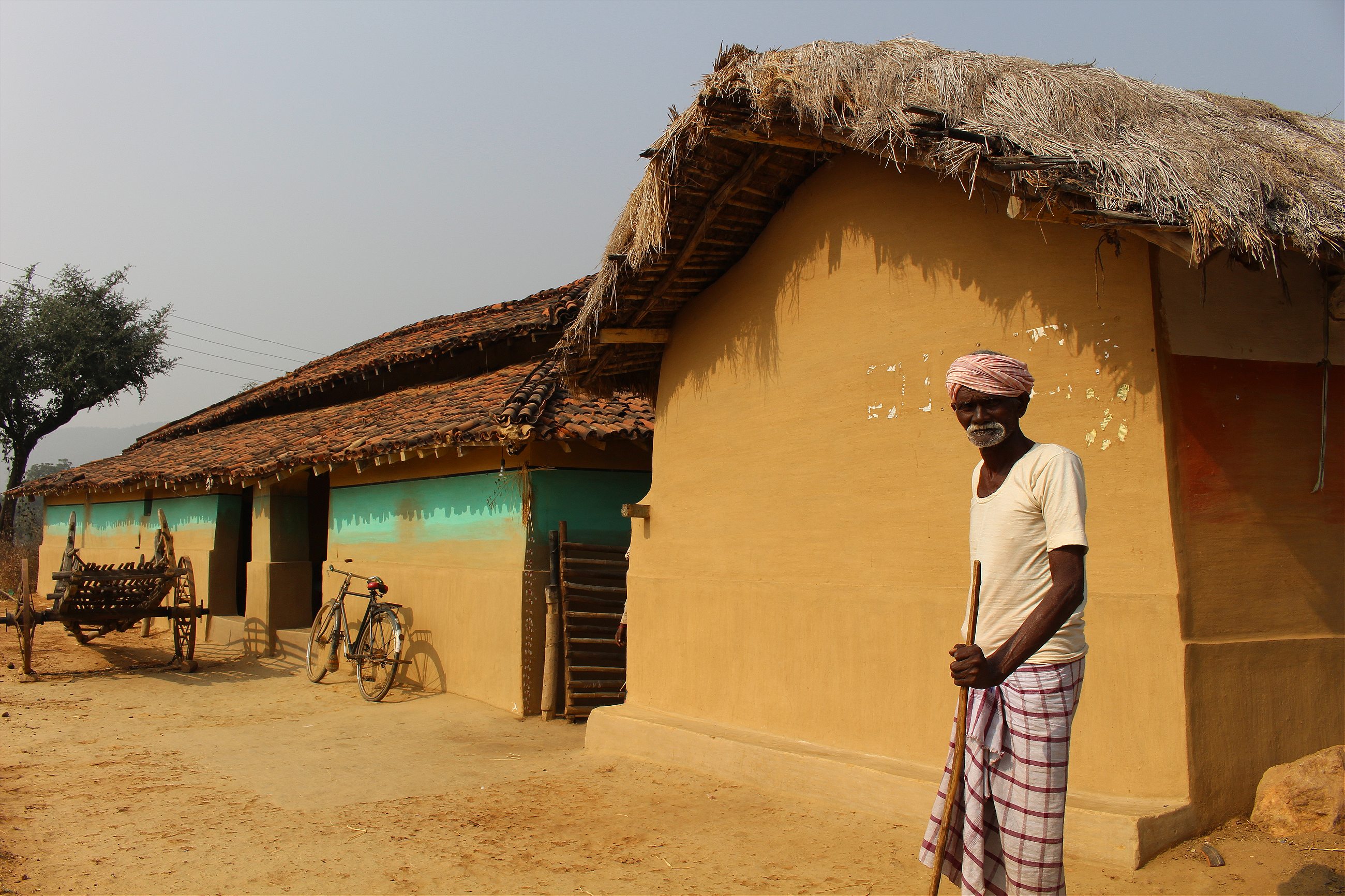
How does a witch doctor identify a witch? Ojhas, as they are called in Jharkhand, are practitioners of traditional medicine. In some parts of rural India, where doctors and hospitals are scarce, ojhas command the community’s respect and Western medicine is often mistrusted. They are also viewed as religious leaders, performing prayer ceremonies and healing the sick. But when they are not curing jaundice or making antidotes for snakebites, they are the ones who identify a daayan. If a witch has caused your illness, they say, they can cure you.
Buddheshwar Mandal, a jovial, pot-bellied, 60-year-old man, is one such ojha who lives in the village of Dumra. On a cold December morning, he has just finished performing his morning prayers at the tulsi (holy basil) plant in the center of his courtyard. A hand-painted wooden sign outside the bight orange walls of his home advertises his skills as a traditional healer. He wears three rings with different colored stones that are meant to provide peace, prosperity, and good health.
Dumra is a sprawling village of about 500 houses. The villagers largely belong to tribal communities and farm wheat for a living. While the region has roads, water, and electricity, there are no doctors. A primary healthcare center has been constructed but it is yet to be staffed.
Buddheshwar, who is well known in the village, says he has cured people of jaundice, malaria, snakebites, epilepsy, piles and lizard bites. “I could charge hundreds of rupees for these medicines, but I don’t want that. It is a kind of service I am doing for people,” says Buddheshwar.
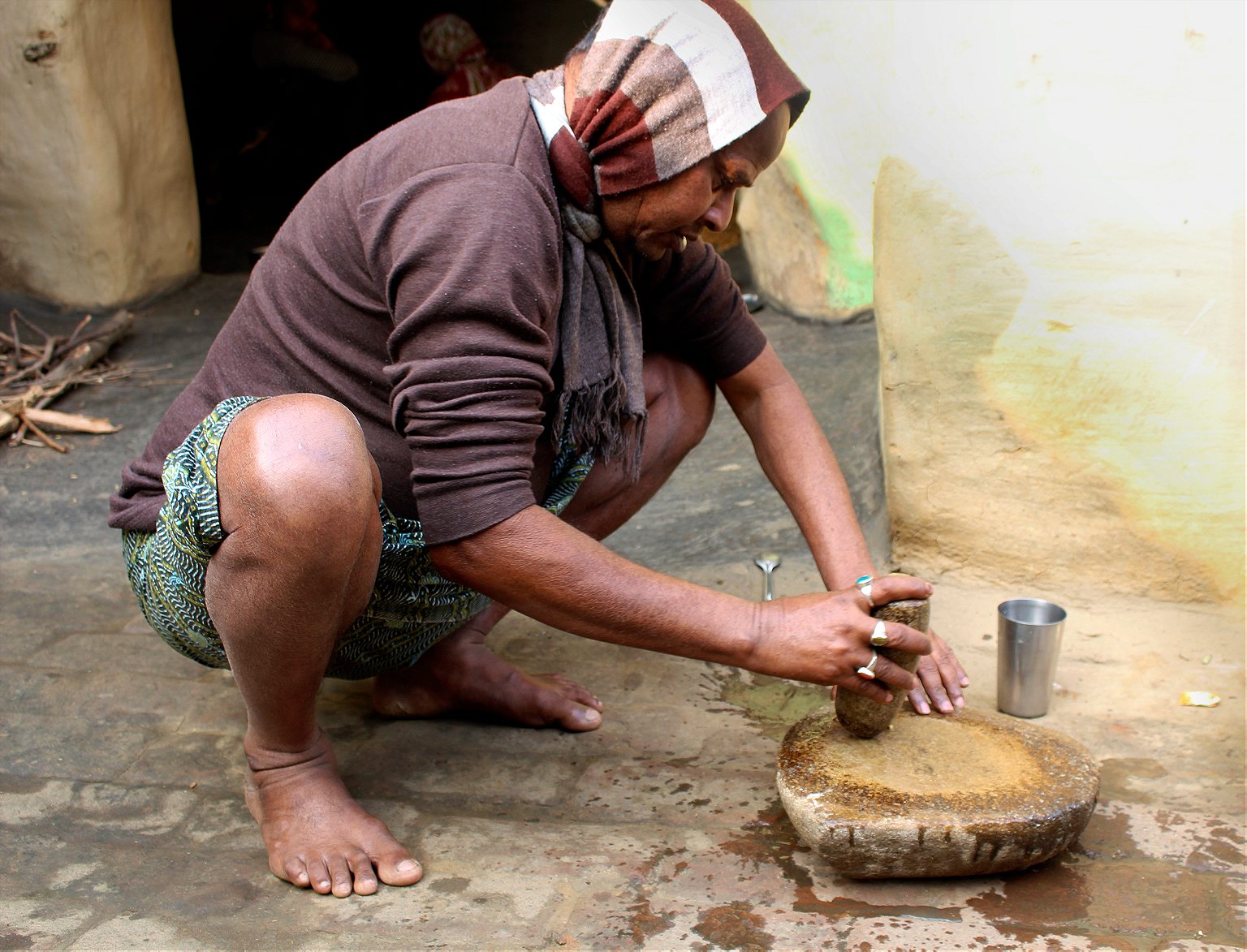
On some occasions however, a person’s illness is caused by a witch, he says, and cannot be cured by herbal medicine. When someone has been cursed by a witch, they will constantly jabber nonsensically.
“When a witch curses you, it is like someone has shot an arrow. Your whole body will be covered in wounds,” he says.
In order to tell whether that is the case, he takes a pinch of raw rice, without counting the grains, and places them in a pile. He does this three times. Then he invokes the name of Manasa Devi, the snake goddess, and places a pinch of vermillion on the rice. He makes pairs of all the rice grains. If all of them are paired, then there is nothing wrong. If there is a single grain of rice is left over, then it means that the person has come under the effect of a witch. In order to be cured, the person must sacrifice a black hen and invoke the goddess of snakes, chanting mantras in her name and lighting incense.
Buddheshwar does not have a monopoly on the witch doctor business in town. Just next door, outside his cousin Ramesh Mandal’s home, hangs a nearly identical sign, announcing his credentials as a practitioner of traditional medicine.
Ramesh becomes animated when speaking of the curse of witches. There are many in his village, he says, and the problem is widespread. To tell if someone is a witch, you simply have to hold her hand. You feel the person’s pulse and if the pulse is beating faster than normal it means that the person is a witch.
“If someone is under the spell of a witch, then she will not spare anyone, not even her own children,” he says, his eyes widening. “Given a chance she will kill her own children.”
Witches, he claims, have immense power. If you are eating and a witch looks at your food, you can get a stomachache and start vomiting. Witches can make events take place. It is relatively easy to learn how to become a witch, he says; there are not that many different incantations. “If someone goes with a witch to a pond or a jungle, she can decide to teach them in that short time,” he says, gesticulating with his hands.
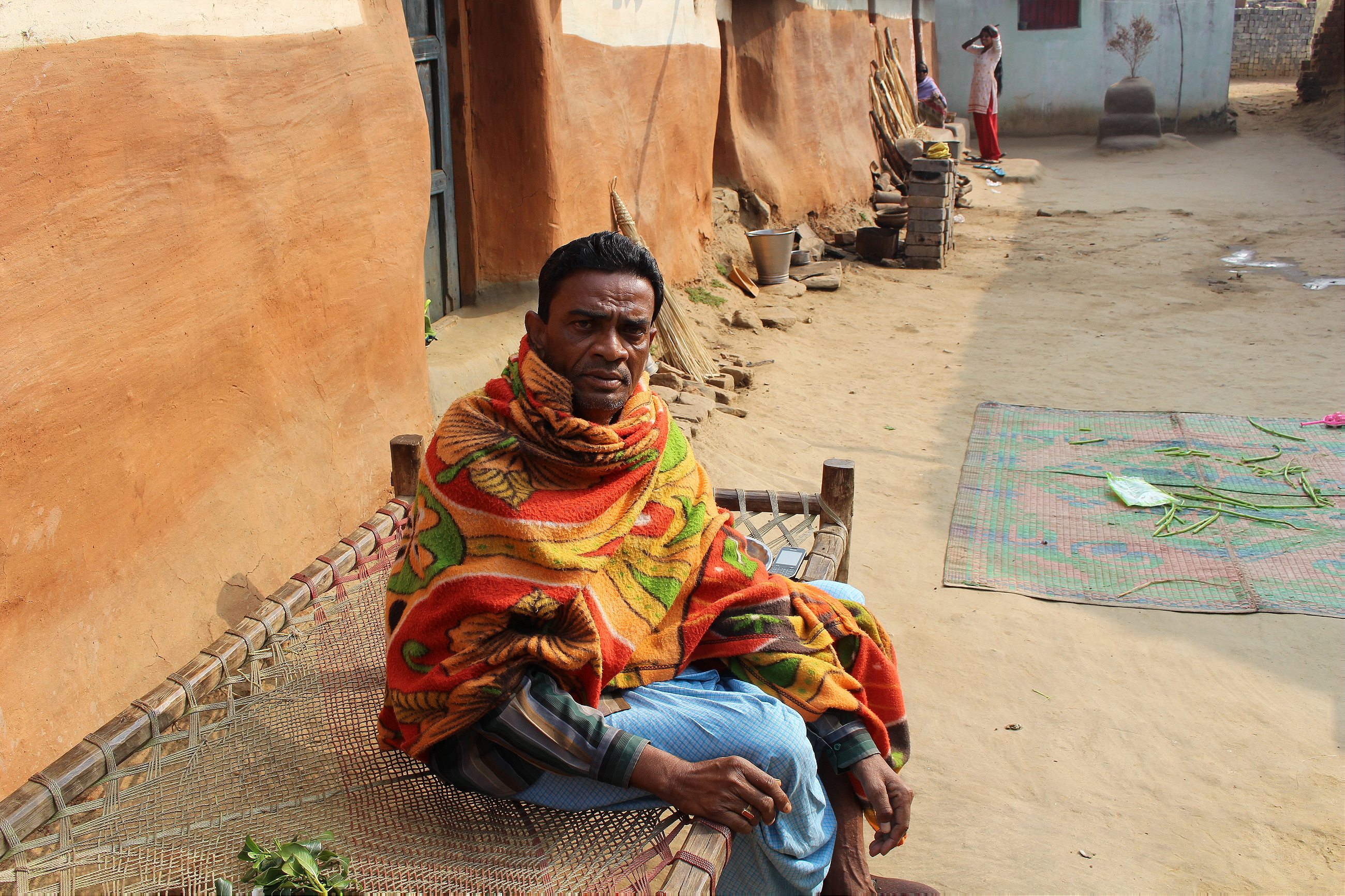
In addition to chanting mantras in the name of the goddess of snakes, to cure you of the spell of a witch, Ramesh recommends that his patients take camel dung. He makes small pills of camel dung, dries them, and keeps them in a box.
However, these days, it is difficult to confront someone who is practicing witchcraft, Ramesh says, because the government doesn’t believe in witches. “We have seen witches with our eyes, but they sit in their offices in the city and tell us that they don’t exist,” he mutters, shaking his head. “Now, if I point a finger at some old lady I will face a court case and be harassed by the police.”
To Ramesh’s annoyance, his children are not interested in his profession. Look, he says, they are glued to the television. “At their age I had been practicing for many years and had become a guru, they don’t even know a single mantra,” he says. While they have attended school, he does not think that they can earn a salary equal to his income. He earns $600 a month through medicines, fees, donations, and sacrifices at the temple.
Chutni would smirk at this. To her, it all boils down to money. “If ojhas will not do this, then how will they earn their livelihood?” she asks.
The closest government hospital for the village of Dumra is about nine miles away at the Gamharia Community Health Care Centre. Each day, the building, a fading yellow structure, is flooded with patients waiting to be seen free of cost. The only government hospital for miles around, it serves a population of 475,000 people. The hospital is staffed with three doctors, who together see an average of 150 patients a day. According to the numbers recorded in a well-worn binder, the doctors estimate that in 2015, they saw 23,188 patients.
Government officials maintain that the issue is not with access to medical care. “Our infrastructure is widespread in all the villages,” says Dr. Gopal Srivastav, a senior doctor in the government medical and health services based in a state-run hospital in Jharkhand’s capital city, Ranchi. “There are doctors available, but superstition stops villagers from approaching them.”
Cobwebs have begun to form around a rusty lock hanging off the iron door. The house, one of the few in the remote village of Bishtumpur that is made with bricks, has been closed for over two months. Surupadiya brushes off the dust that has settled on the bamboo cot outside the house.
She has been living alone for many years now; her husband has passed away and her three daughters are all married. Now, in her old age, she is left to manage the 32 acres of land the family owned. She feels old, though she does not know exactly how old she is. Her parents, never having learned to read or write, did not keep any records. Surupadiya groans as she settles into the chair; her legs are still swollen from the attack that caused her to leave her home.
At about 7 a.m. on the morning of Oct. 28, Surupadiya walked out to the village center, looking to hire daily wage laborers to help with her wheat harvest. On her way, she crossed paths with her neighbor’s daughter, Anju Sawaiyan. Anju had not been well, and claimed that Surupadiya was a witch and had caused her illness. I get sick whenever you come in front of me, said Anju, pulling Surupadiya’s hair. Anju easily overpowered the frail older woman, hitting her with a stick, kicking her, and pushing her to the ground.
It was early in the morning, and while the villagers had not yet headed out to their fields, no one came to Surupadiya’s side. Eventually, she made it home, sobbing and almost unconscious from the pain.
Now, Surupadiya lives in constant fear. “I feel like they may kill me anytime,” she says, her eyes welling up. “My fields are full of crops but I was forced to leave the village and stay with my daughter.”
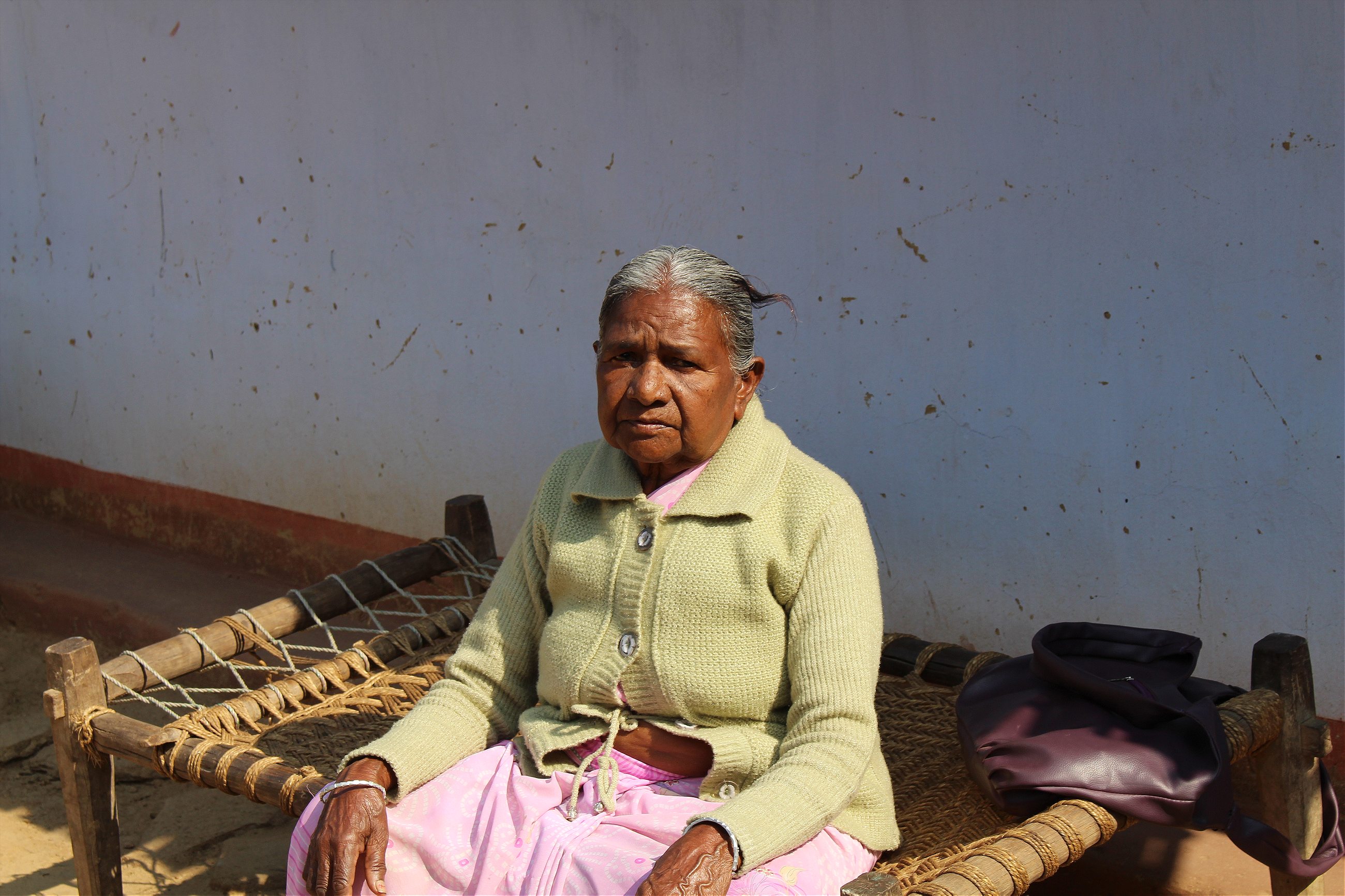
The land that she is now unable to harvest is at the heart of her troubles. When she fell on hard times and was unable to cultivate the land on her own, she mortgaged a portion of the land to Anju’s family in return for a loan. Some years later, she tried to repay the loan and regain control of her land. But they refused to accept, and said that they had the right to the land because they had been cultivating it. Now, she is afraid that they intend to kill her in order to take the rest.
A few days after the attack, Surupadiya went to the Jhinkpani police station with her daughter. The police officers on duty, however, dismissed the case, telling them to reconcile with their neighbors. The girl who attacked her was very young they said, and an official complaint was not necessary.
Then her daughter, Jasmati, heard about Chutni and went to visit her. When Chutni heard what had happened to Surupadiya, she sprang into action. She called the district’s superintendent of police and asked why no action was being taken. She wrote to the Jharkhand women’s commission, asking that legal action be taken against Anju. As was her custom, she left her contact number at the bottom of the letter and signed with a smudgy thumbprint.
On a hot winter afternoon in December, Chutni accompanies Surupadiya and her daughter back to the Jhinkpani police station, a dusty compound at the end of a dirt road about 12 miles from Surupadiya’s locked home. On seeing Surupadiya accompanied by an activist, Sub-Inspector Kripa Sagar Singh pulls up some chairs at a white plastic desk and offers her a seat. After listening quietly for a few minutes, he cuts in, and begins to belligerently berate the two women for not having filed an official written complaint.
We were at the police station for two days but nothing was done.
“Madam, you were told to write it down but there is nothing you have given us in writing,” Kripa Sagar repeats over and over, in a nasal voice that gets louder with time.
Jasmati, Surupadiya’s daughter, is rankled at the suggestion that they were to blame. “We were at the police station for two days but nothing was done. I am not literate, so we could not write our complaint ourselves, but nobody was willing to write the complaint for us.”
Finally, as they are leaving, the station chief, Sanjay Kumar Jha, asks for Chutni’s contact number. “Yes sir, write it down,” she says, smiling triumphantly. “My number has been circulated in every corner of Jharkhand.”
On the way home, Chutni stops at the Saraikela Civil Court, a sprawling collection of imposing buildings on the side of a busy highway. The testimony of a case she recently received, which was hastily scrawled out on a piece of paper, must be typed up. Chutni makes her way to the line of notaries and typists sitting under shanties across the street from the court, dodging puddles and stray dogs on the way. A middle-aged man in a sweat-stained shirt sits typing at a shaky wooden desk, piled high with sheets of paper tied together with string.
Much of Chutni’s work involves filing complaints and petitions to government officials. Yet, she herself is largely illiterate and relies on her sons and daughter-in-laws.
“In my time no one used to make girls study, we went to school for a couple of years,” she says, cackling cheerfully. “Then we got married, and if we were unlucky like me, were forced out of our husband’s homes after being called a witch.”
On a winter morning at Chutni’s house, things are unusually calm. It is the first day of the New Year, and to celebrate the occasion, Chutni brings out a bottle of bright red nail polish and begins to carefully apply it to her fingernails. She cannot afford a new sari this year, and has decided to settle for new polish instead. Flipping through old photographs and newspaper cuttings, she finds one in which she is in her thirties. “Look, in this picture I still have all my teeth!”
While Chutni still lives in the village where she was born, she and the village have both changed immensely.
Today, when Chutni walks into a police station, they do not scream at her to leave, but pull out a chair and offer her tea. She has been feted at award ceremonies and has even flown in an airplane on three different occasions. She hopes to soon start a vocational training center that will allow women who have been branded witches and forced to leave home to earn an income.
She is proud of education she has been able to give her three sons, who live with Chutni along with her two daughter-in-laws and three grandchildren. Her oldest son works in a factory nearby, her second son teaches in the village school and her youngest son is still studying.
Only her daughter, Kesowati, who is married, stopped studying after the tenth grade. When she talks about getting her daughter married at the age of 15, there is a twinge of regret in her voice. “I would go here and there for work. When you have daughters in the family, everybody has an eye on them,” she says. “I was afraid that someday someone would try to harm her.”
Both of her daughters-in-law have advanced degrees. When her younger daughter-in-law wanted to delay having a child to continue studying, she defended her from the villagers’ mocking. One day, she hopes, they can take over her work.
Chutni’s phone rings. Someone is calling about their daughter’s case, asking if she has followed up with the police. Chutni listens for a few minutes and then hollers her reply, holding her phone in font of her mouth like a microphone. She assures him that she is working on the case. “You should have seen how scared the policemen at the Jhinkpani station were… Whatever the world says, don’t worry. I am no ordinary person. If I want, I can leave the whole of Jharkhand shaken!”
